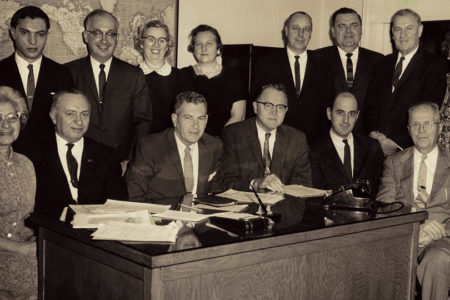Israeli Economy Gallops Ahead
As Israel turns 60, the country’s sizzling economy is hotter than an Uzi machine gun lying in the searing desert sun.
In fact, the Gross National Product, which measures overall economic activity, rose by nearly 6 percent during 2006 and 2007, giving Israel the fastest-growing economy in the developed world. Significant expansion was forecast to continue through 2008.
According to published statistics, Israel’s purchasing power per capita was more than $30,000 in 2007 after rising from $26,200 in 2006. This put the citizens of the world’s only Jewish state on a similar economic footing with large Western European powers like France and Italy—and ahead of Spain, Greece, Portugal, and most Eastern European nations.
However, the dramatic growth also spurred inflation, which measured around 3 percent during 2007. But that still compared favorably with the U.S. rate of over 4 percent for the year.
Israel’s economic expansion has been remarkable, especially since the country is only six decades old and—surrounded by mostly hostile Muslim neighbors—has been forced to spend a disproportionate amount of tax money on defense. American financial aid totaling around $3 billion a year, which has been somewhat reduced this decade and must be largely spent inside the United States, has helped offset Israel’s huge military spending drain since the mid-1980s.
With a steady stream of new immigrants and a strong will to survive, Israel’s economic growth during the 1950s and ‘60s was robust, often over 10 percent annually. A major spurt followed the 1967 Six-Day War, as jubilant Israelis began rebuilding the Jewish Quarter in Jerusalem’s captured Old City and other parts of the suddenly reunited capital.
Still, the country’s basic economic model closely reflected the socialist system then in place throughout Communist Eastern Europe, with powerful labor unions having a disproportionate ability to shut down the economy at will, which they frequently did.
The rapid expansion that marked Israel’s early years came to a screeching halt after the disastrous, Soviet-backed, 1973 Egyptian-Syrian surprise attack on Yom Kippur that sparked a three-week war that the stunned Jewish state nearly lost. Out of necessity, government defense spending skyrocketed in the wake of the harrowing conflict, spurring on inflation.
Israel’s increasingly dire financial situation was compounded by the 1982 Lebanon War that further hampered the limping economy. By 1984, the annual inflation rate was an astounding 450 percent!
Working in the land in those traumatic days, I well recall that prices rose every day to the point that they were never actually posted on groceries and other products. Checks issued in Israeli shekels were instantly cashed and spent, since their value eroded virtually overnight.
The path to recovery began in 1985 with a major economic stabilization plan implemented by then-Prime Minister Shimon Peres. This was followed by various free-market reforms that climaxed under Prime Minister Benjamin Netanyahu’s administration in the late 1990s.
Major modifications included reducing the power of the unions and liberalizing rules for foreign investment, which mushroomed to$13 billion by 2006. The massive immigration wave from the former Soviet Union that brought more than a million people to Israel’s shores during the 1990s further greased the barreling economic expansion.
However, stagnation returned early in this decade as the Palestinian al-Aqsa terrorist attrition war and the American-led military campaign to topple Iraq’s Saddam Hussein led to a collapse in Israel’s large tourism industry. But Netanyahu, who graduated from the Massachusetts Institute of Technology in 1975 and was appointed finance minister by Ariel Sharon in 2003, introduced further free-market innovations that helped repair the struggling economy. Coupled with a steep decline in terrorist violence, a new growth spurt got under way in 2004 that has continued as Israel neared its 60th birthday celebration.
Israel’s dramatic economic expansion in recent years—largely fueled by the country’s burgeoning high-tech industry—was reflected in a sharp rise in the local stock market. It shot up more than 40 percent from the end of the 2006 Lebanon War through the autumn of 2007. This followed a nearly 45 percent rise in 2004 and 2005.
The Tel Aviv-based market, which trades shares in more than 660 companies, rose sharply after steep falls following the outbreak of widespread Palestinian violence in late 2000.
Massive value increases in recent years have come despite the loss of significant agricultural land and industrial plants due to the 2005 Israeli civilian and military withdrawal from the coastal Gaza Strip, the violent June 2007 Hamas takeover of the same area, and the costly war with Hezbollah forces in Lebanon.
In summary, Israel’s early and recent economic prosperity can almost be described as miraculous—a term often associated with the Lord’s special land!







